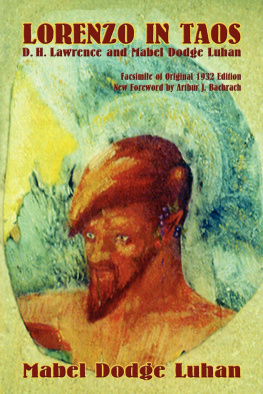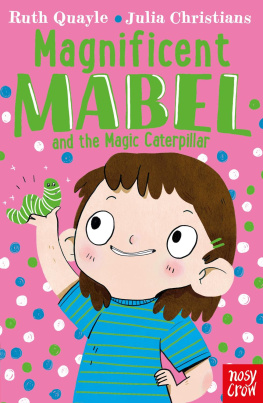From Greenwich Village to Taos
Primitivism and Place
at Mabel Dodge Luhans
Flannery Burke
UNIVERSITY PRESS OF KANSAS
Portions of Chapter 6 first appeared in An Artist's Home: Gender and
the Santa Fe Culture Center Controversy, Journal of the Southwest 46,
no. 2 (2004): 351379.
2008 by the University Press of Kansas
All rights reserved
Published by the University Press of Kansas (Lawrence, Kansas 66045),
which was organized by the Kansas Board of Regents and is operated
and funded by Emporia State University, Fort Hays State University,
Kansas State University, Pittsburg State University, the University of
Kansas, and Wichita State University
Library of Congress Cataloging-in-Publication Data
Burke, Flannery.
From Greenwich Village to Taos : primitivism and place at Mabel Dodge
Luhans / Flannery Burke.
p. cm. (CultureAmerica)
Includes bibliographical references and index.
ISBN 978-0-7006-2236-8 (pbk. : alk. paper)
ISBN 978-0-7006-2237-5 (ebook)
1. Luhan, Mabel Dodge, 18791962. 2. Luhan, Mabel Dodge,
18791962Friends and associates. 3. Luhan, Mabel Dodge,
18791962Homes and haunts. 4. IntellectualsUnited States
Biography. 5. Taos (N.M.)Intellectual life. 6. Radicalism
New MexicoTaos. 7. SubcultureNew MexicoTaos. I. Title.
CT275.L838B87 2008
978.9'53092dc22
[B]
2008003948
British Library Cataloguing-in-Publication Data is available.
Printed in the United States of America
10 9 8 7 6 5 4 3 2 1
The paper used in this publication is recycled and contains 30 percent
postconsumer waste. It is acid free and meets the minimum
requirements of the American National Standard for Permanence of
Paper for Printed Library Materials Z39.48-1992.D-DH
Acknowledgments
I have fantasized many times about finding myself at Mabel Dodges salon in New York or at her home in Taos, New Mexico, and each time it has been the diversity of guests and their passion for their individual projects that have made the fantasy a compelling one. How delightful to realize, then, that this book has introduced me to a similarly broad range of talented companions.
I first thank Bill Cronon at the University of WisconsinMadison for his untiring support for me and my work and for the generosity of spirit and curiosity that allow him to see the promise in what I do. I arrived at Madison because Sharon Ullman at Bryn Mawr College told me that I could be a historian if I really wanted to, and she taught history in a way that made me really want to. At Madison, the Havens Center series on Chicano/a studies; conversations with Cherene Sherrard, Bruce Burgett, Julie DAcci, Michele Hilmes; and the supportive community surrounding Nancy Worcester in the Department of Womens Studies introduced me to the excitement and challenges of interdisciplinary work. As much as I enjoyed my ventures outside the History Department, I always tried to take the discipline and intellectual rigor I had learned in my history classes with me. Jeanne Boydston, Linda Gordon, Steve Sterne, Suzanne Desan, Steve Kantrowitz, Tony Michels, and Paul Boyer repeatedly insisted that I ground myself in the painstaking work that is everyday practice for historians, and I appreciate their never-ending patience with my progress.
My colleagues at Madison kept me going through seemingly interminable winters, and Bills breakfast meetings provided weekly inspiration from my peers. I owe special thanks to Hannah Nyala, Marsha Weisiger, Honor Sachs, Karen Spierling, Greg Summers, Lisa Levenstein, Thea Browder, Sarah Costello, Laura McEnaney, Deirdre Egan, Abby Markwyn, and Joe Cullon, who were always willing to listen (and listen they did!) and to remind me gently that this was a project I wanted to finish. Louise Pubols not only listened to me, she fed and housed me and provided a welcome to Los Angeles and the Huntington Library (perhaps the most magical of places for a scholar). I know that all of these individuals had more important things on their mind than helping me find my feet in the world of academe. That they have produced stunning scholarship while also extending their friendship only makes their work more impressive.
My writing group is the most heavenly collection of individuals any historian could assemble. Katie Benton-Cohen doesnt balk at anything, including some of the pieces of writing I handed to her. I am humbled by the idea that our books might someday share space together on the same shelf. If I had the right connections I would nominate Jenka Sokol as the patron saint of western historians. I would like to be as patient and kind and gracious as Jenka someday, but if I never achieve it, it will only be because Im human. I dont know how to thank Thomas Andrews properly. There is no part of my professional life he has not improved. He started our group, kept it going as we scattered to all corners of the country, and remained steady, brilliant, kind, and generous throughout, all the while producing stellar work of his own. When we started working together at California State UniversityNorthridge, I felt like we were sitting back-to-back in a field, holding each other up as we took in different parts of where we were. Were farther apart now, but I know we will support each other still.
I could never have finished this book without financial assistance. Hannah Nyala worked some kind of magic to find me a fellowship to head off to my first archive. Fellowships and awards from the Huntington Library, the Smithsonian Institution, the Southern Methodist University Clements Center for Southwest Studies, the Beinecke Rare Book and Manuscript Library, the Charles Redd Center for Western Studies, the Harry Ransom Humanities Research Center at the University of TexasAustin, the California State UniversityNorthridge College for Social and Behavioral Sciences, the Autry National Center Institute of the American West and its Women of the West Museum funded research and writing time and brought me into a host of stimulating intellectual environments.
Indeed, it is the intellectual camaraderie that I most appreciate. At the Huntington, Carla Bittle and Andrew Lewis helped me through my first plunge from research to writing. I hold Bill Deverell and Amy Meyers responsible for my addiction to Los Angeles. Their visual culture interpretative seminar held jointly at the Huntington and the California Institute of Technology, and funded by the Andrew Mellon Foundation, introduced me to the city and insured that I would never encounter a place again without thinking long and hard about how it came to look as it did. My seminar mates provided one of the best academic experiences of my career and continue to make academic life enjoyable. Ryan Carey has continued to provide inspiration, entertainment, and provocation in equal measure. Jen Seltz pushes me in all the right directions with kindness and good humor. Paul Karlstrom, Virginia Mecklenberg, Bill Truettner, and Liza Kirwin of the Smithsonian welcomed me during my first foray into the world of art history and encouraged my project on both coasts. I am especially grateful to Sherry Smith, David Weber, Alexis Mc-Crossen, Ben Johnson, Michelle Nickerson, Andrea Boardman, Ruth Ann Elmore, and my fellow fellas, Colleen ONeill and Tisa Wenger, for the wonderful year I spent at Southern Methodist University, incisive commentary on my manuscript, and enthusiasm for all things New Mexican and southwestern. The Clements Center manuscript workshops are a brilliant idea, and my own workshop improved this book immeasurably. I am especially grateful to Phil Deloria, Sharyn Udall, and Lois Rudnick (who read the whole book twice!), whose scholarship, insights, and commentary insured that I would at least try to match the enviable examples each have set. The Clements Center also generously helped fund the paperback and electronic editions of this book, ensuring that the product of our workshop and year together has a longer life. Although he was not present, he has been so helpful that I have begun to imagine David Wrobel at my workshop, offering gentle corrections and cheerful suggestions. He has been incredibly generous with his time and support, and I cant imagine that this book would exist without him. At the Ransom Center, staff members steered me through both the art and letters of those who visited Mabel Dodge and introduced me to some of the lesser-known writings of her visitors. At Northridge I have found colleagues who share my enthusiasm for teaching and have graciously shared their abilities to balance instruction and scholarship. The Department of History reading group; my fellow Whitsett Committee members, Tom Maddux, Merry Ovnick, Josh Sides, and Thomas Andrews; along with Tom Devine, Patricia Juarez-Dappe, Susan Fitzpatrick-Behrens, Clementine Oliver, and Jeffrey Auerbach, have all provided useful comments and consistent support. All of my students inspire me, but I owe a special debt to Paula Ellias, whose thesis work led me to reconsider some of my own conclusions and whose own work ethic is an inspiration to us all. Steve Aron, Gingy Scharff, Louise Pubols, and Erik Greenberg have made the Autry an even more fabulous place to be for a western historian. I am grateful to each of them and to those who attend the Autrys monthly workshop for comments on my work and support for my project.





